Last Updated on May 23, 2024 by Jason
The story of the Dirty Dozen watches began in 1943 when the British War Department realised the necessity of having a general service wristwatch built to high standards. They commissioned a watch for its forces. The aim was to find a replacement for the old A.T.P. (Army Trade Pattern) watches that had been in service since 1939 and were based on civilian watches at the time. The army demanded a much higher standard for the battlefields.
The nickname “Dirty Dozen” was not applied to this collection until decades later. The title is derived from the 1967 film of the same name. The Dirty Dozen is a 1967 American war film directed by Robert Aldrich and starring Lee Marvin with a supporting cast including Ernest Borgnine, Charles Bronson, Jim Brown, John Cassavetes, Richard Jaeckel, George Kennedy, Ralph Meeker, Robert Ryan, Trini Lopez, Telly Savalas, Donald Sutherland, Clint Walker and Robert Webber. Set in 1944 during World War II, the film follows a military unit consisting of twelve convicts as they are trained as commandos by the Allies for a suicide mission ahead of the Normandy landings.
Trench watches
Wristwatches came into general usage for men during World War I. At the time, pocket watches were very much in vogue for social situations. However, pocket watches proved impractical for troops on the battlefield. Soldiers needed the use of both hands in combat situations, such as firing a rifle while simultaneously checking their watch to determine exactly when to advance. Watchmakers at the time responded to the demands of warfare in a rather makeshift way at first, re-engineering pocket watch cases with soldered strips of wire to connect them to leather straps so they could be worn on the wrist. These early examples soon evolved into purpose-built wristwatches, which are referred to as “trench watches”. Although these were effective at the time, advances in military equipment, technology, and strategies in subsequent years necessitated a more purposeful approach to watchmaking as a WW2 erupted in Europe.
Criteria
Commander (later Field Marshal) Alan Brooke, a prominent British officer and advisor to Winston Churchill, played a key role in setting down the criteria for a “perfect soldier’s watch”. In 1943, Brooke specified the following characteristics:
- Black dial with Arabic numerals.
- Small second at 6 o’clock with railroad minuterie.
- Luminous hour and minute hands and indexes.
- Precise movements (if possible regulated to chronometer standards).
- Hand-wound movements with 15 jewels.
- Shatterproof plexiglass and shock-resistant case.
- Waterproof, easy-grip crown (for use with gloves).
- Best possible water resistance
Watches were still being made in Great Britain at the time, however, most British manufacturing firms had been directed to shift their production to goods more directly related to the war effort. As a result, the British War Department reached out to 12 leading Swiss watchmakers of the time, some of whose names are still prominent today, Buren, Cyma, Eterna, Grana, Jaeger-LeCoultre, Lemania, Longines, IWC, Omega, Record, Timor, and Vertex. A 13th company, Enicar, was on the original supplier’s list, but they failed to deliver any watches.
Design
In addition to the easy-to-read black and white dial layout, most dials of the Dirty Dozen field watches are signed with the brand name and a “Broad Arrow” directly below it. This icon represents a stylised representation of a metal arrowhead, consisting of a tang and two barbs that meet at a point. The Broad Arrow, also known as a pheon, is a symbol that was commonly used by the British military to mark its property.
The same is true for the back of the watches, where the case back not only features the Broad Arrow, but additionally three W’s. The “W.W.W.” was engraved either on the screw-down or snap-in steel case back and stands for “Watches, Wrist, Waterproof”. In other words, designating it as a water-resistant wrist watch. The casebacks also carried an engraved military serial number consisting of a capital letter followed by five digits.
Some Dirty Dozen watches appear with a “P” in the second sub-dial, which indicates it is a likely later dial, with Promethium as the radioactive element that drives the luminosity in the hands and numerals. I am unsure how this affects the value as the modified dial suggests that the watch is no longer fully original. That said, the “P” versions seem to be rare and therefore may become collector’s items in their own right.
The Dirty Dozen in service
There are reports of the first Dirty Dozen pieces being delivered to the British in late 1944, just before D-Day 1944. However, it seems that most were delivered in 1945. A total of around 150,000 watches were produced. They primarily landed with specialist units, such as radio operators. While many did not, large numbers also did end up on the battlefield. A small number of W.W.W.s were salvaged by the War Department after the war. Interestingly, these were then sold to other armed forces.
Buren
Buren Watch Company was founded in the Swiss canton of Bern in 1898, owned and operated by London-based H. Williamson Ltd. primarily as a maker of pocket watches and clocks. The Buren “Grand Prix” had a 36.5mm case and used the Buren 462 calibre. Only around 11,000 Buren WWW watches were made for the British Army during WW2.
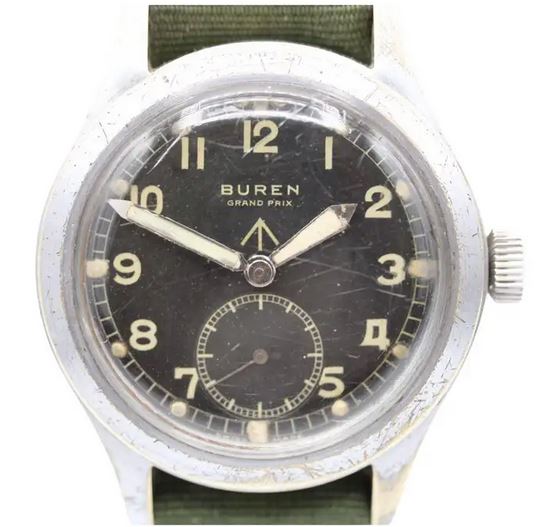
Cyma
Cyma is a Swiss watchmaker founded by the brothers, Joseph and Theodore Schwob in 1862. The brothers established Schwob Frères in La Chaux-de-Fonds, Switzerland, and worked according to the établissage system. Cyma’s Dirty Dozen Watch contribution had a 37mm stainless steel case and used the Cyma calibre 234, with 15 jewels. Cyma issued around 20,000 watches to the War Department during WW2.
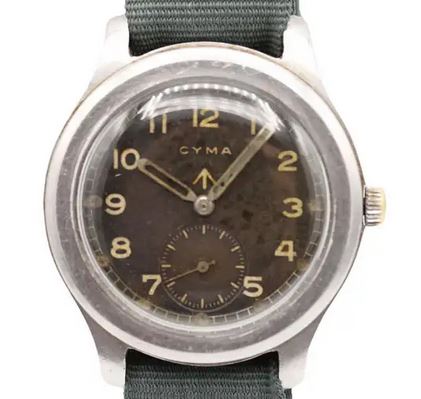
Eterna
Eterna has a history which stretches back to 1856. Dr. Joseph Girard teamed up with a young teacher, Urs Schild and established a watch company, having identified a niche in the market for creating watch movements. The company became a reputable manufacturer of semi-finished movements (Ebauches, which are now known as ETA) and full-finished movements. Eterna’s Dirty Dozen watch had a 36mm stainless steel case, with the manually wound in-house Calibre 520. Only around 5,000 watches were made.
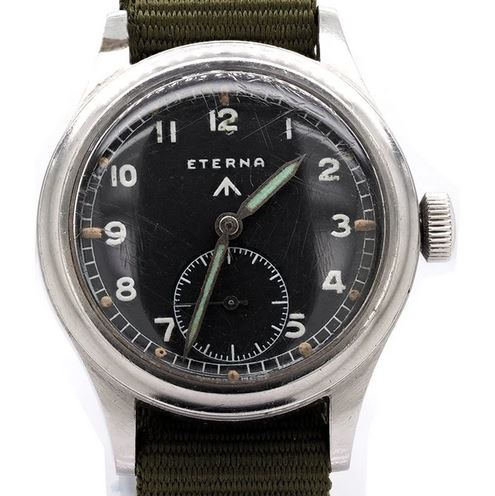
Grana
Grana was founded in 1888 when Adolf and Alfred Kurth opened their first movement and supplies factory for the watchmaking industry in Grenchen, Switzerland. Initially, the brothers traded as Kurth Freres. The company produced watch components and ebauches. In 1906, the Kurth brothers produced their first complete watch using the brand name “Grana”. After WW2 the company continued trading under the brand name Certina. The Grana Dirty Dozen watch had a stainless steel 35mm case and used a 15-jewel KF320 (Kurth Frères) movement. Of the Dirty Dozen, none is more desirable than the Grana, simply because so few were made. At most there may have been 5000, but possibly as few as 1000.
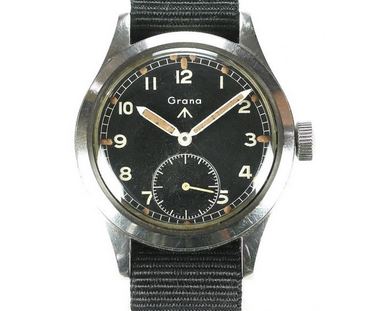
Jaeger-LeCoultre
Jaeger-LeCoultre was established in 1833 in the heart of the Vallée de Joux in the Swiss Jura. Jaeger-LeCoultre’s most iconic watch is the Reverso, made in 1931. It is recognisable by its reversible case, which was designed as a sports watch for polo players to wear during matches. Jaeger-LeCoultre’s watch for the War Department during WW2 had a 35mm steel case and a chrome bezel. It used a Jaeger-LeCoultre in-house movement, the manually wound calibre 479. Around 6,000 Dirty Dozen watches were made by Jaeger-LeCoultre.
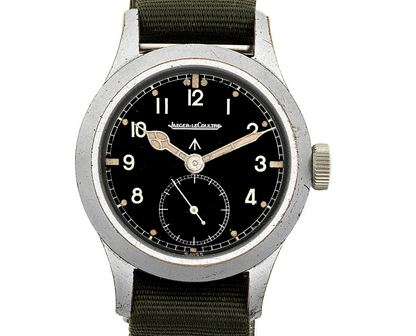
Lemania
Originally founded by Alfred Lugrin in L’Orient, Switzerland, in 1884. Lemania initially focused on producing high-quality watch movements. Throughout its history, Lemania has collaborated with various renowned watchmakers and brands. One of its notable partnerships was with Omega, where Lemania supplied movements for many of Omega’s iconic chronograph watches, including the Speedmaster. Lemania’s Dirty Dozen watch had a 36.5mm steel-and-chrome case and contained the manually wound Calibre 27A. Lemania supplied around 10,000 Dirty Dozen watches to the War Department.
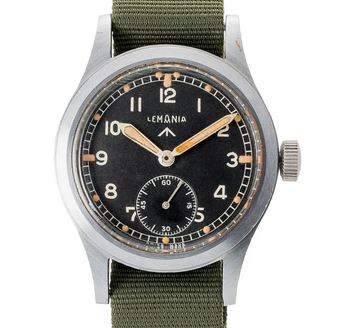
Longines
Headquartered in Saint-Imier, Switzerland since its founding in 1832, Longines takes its name from “les longines,” the “long meadows” surrounding the village. The brand has been a pioneer in sports timing and a one-time Olympic Games timekeeper. Longines Dirty Dozen watch had a stainless steel, 38mm case using a 17 jewel 12.68z calibre movement. Around 8000, Dirty Dozen watches were supplied by Longines.
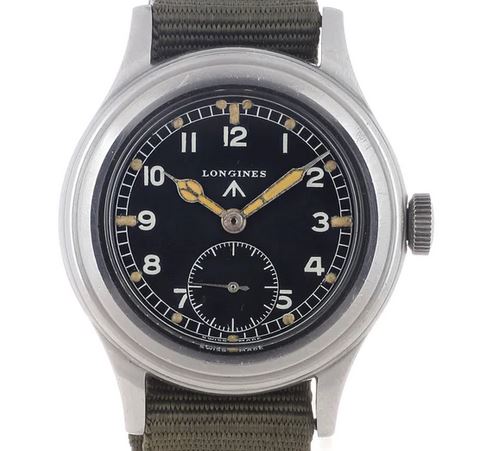
IWC
IWC, which stands for International Watch Company, is a renowned Swiss luxury watch manufacturer based in Schaffhausen, Switzerland. The company has a history dating back to 1868 when it was founded by an American watchmaker named Florentine Ariosto Jones. Today, IWC is renowned as a luxury watchmaker, with its Pilot and Portugieser collections being particularly noteworthy. IWC supplied a Dirty Dozen watch with a 35mm steel case containing the Calibre 83, protecting it behind a snap-on case back, the only one of this type used for a Dirty Dozen watch. The watch is one of the most collectable of the dozen, as it had a limited production run of around 5,000 pieces.
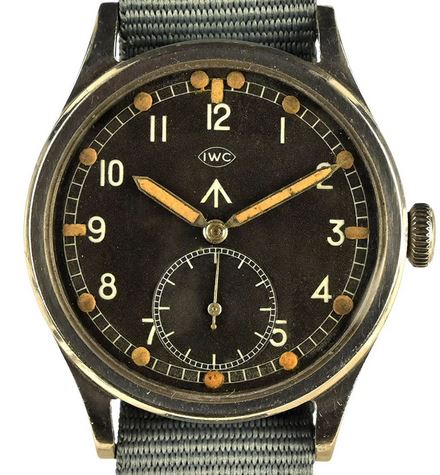
Omega
Omega was founded by Louis Brandt in 1848. The company created some of the earliest minute repeaters and tourbillons for the wrist and was the first to use the revolutionary co-axial escapement in its calibres. By far its best-known, watch model is the Speedmaster Professional, aka the “Moonwatch”. In 1969, it became the first watch worn on the moon and has been a mainstay of NASA space missions ever since. Omega has been a timing partner of the Olympics since 1932 and regularly releases collectable special editions in concert with the Games. Since 1995, Omega has been the official watch of James Bond, with both Pierce Brosnan and Daniel Craig sporting the naval-inspired Seamaster modes on the big screen. Omega’s Dirty Dozen model had a 35mm steel case and contained the manually wound Omega Calibre 30T2. Around 25,000 Omega Dirty Dozen watches were produced for the War Department.
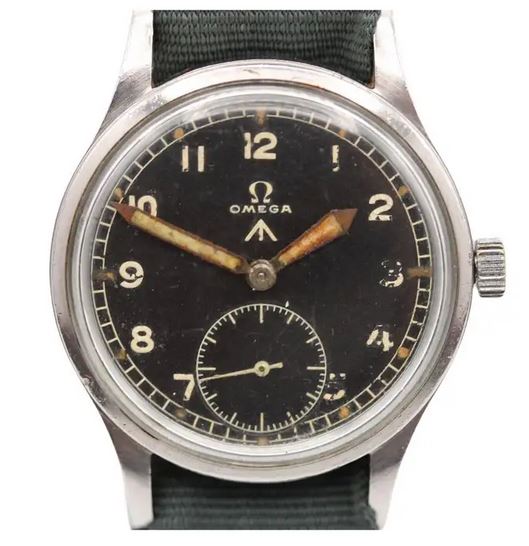
Record
The Record Watch Co. was founded in the Swiss Jura Mountains in 1903 and was known as the maker of the popular, triangular “Sector” pocket watch. In the early 20th Century, Record focussed on wristwatches and included high-end chronographs in the 1930s. The Dirty Dozen watch produced by Record measured 36.5mm in chrome-plated steel and held the Calibre 022K behind its screw-on case back.
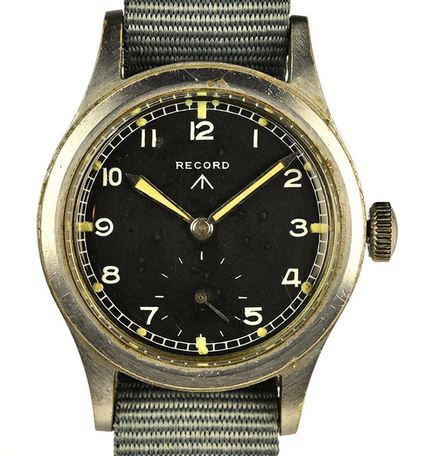
Timor
Timor started making watches in 1923 in La Chaux-de-Fonds and was noted for making one of the first watches for partially sighted people in 1931. The watch featured a hinged crystal over the dial and Braille numerals. Timor was popular in Britain and made one of the first wristwatches for the British Army, even before the W.W.W. specifications that gave rise to the Dirty Dozen. Timor’s Dirty Dozen watch had a chrome-plated 36.5mm steel case which contained the mechanical calibre 6060 and its black dial hosted luminous pencil-shaped hands. It is believed that Timor supplied the British armed forces with 13,000 Dirty Dozen watches.
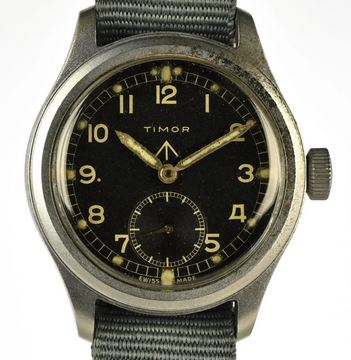
Vertex
The company was founded in 1916 by Claude Octavius Lyons in London, England. Initially, Vertex specialised in manufacturing high-quality pocket watches, which were respected for their precision and craftsmanship. It was a British company, that assembled watches with Swiss made movements. However, by the 1920s, the company owned a factory in La Chaux-de-Fonds, Switzerland. The Vertex Dirty Dozen watch had a chrome-plated, 35mm case with an in-house calibre 59 movement. Vertex shut down in 1972. 15,000 of these Dirty Dozen watches were supplied by Vertex to the British forces.
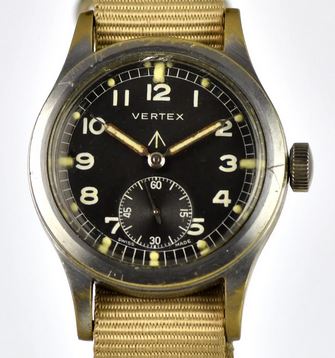
Collecting
The Dirty Dozen watches are a fascinating piece of British military history and a great example of Swiss watchmaking during WW2. If you are interested in collecting them, you should do your research and look for authentic and original examples with the correct markings and engravings.
Related content
Dirty Dozen at Vintage Watch Specialist.
The ‘Dirty Dozen,’ An Incredible Collection Of 12 (Mostly) Inexpensive Military Watches – Hodinkee.
Hi, On going through my late dads and grandads war mementos I came across a Lemania wrist watch. Was wondering if you could give me some information on it.
Description:
Front: Black face, luminous hands, arabic numbers and luminous seconds hand with a luminous letter P in seconds dial. Top of watch face is a crown with LemAnia underneath and under LemAnia is a broad arrow. Then immediate above no6 on watch face is the seconds circle dial with luminous P in it.
Back: W.W.W underneath crows foot, under that is A 6001
under that is serial No: 351****.
Would this be a ‘Dirty Dozen watch’? Would you happen to know date produced.
Thanks
Jac
Hi Jac, based on your description, it does appear to be that you have a Lemania Dirty Dozen watch, which likely dates to 1945. The “P” on the sub-seconds dial indicates that the luminosity is driven by Promethium in the luminous paint. I believe this was later modification to the original dial. It is definitely a watch that would be of interest to Dirty Dozen collectors. I hope it is still working and that you get the chance to wear your father’s watch. Thanks for commenting, Jason.
Thank you for replying Jason.
Yes it still works. As I said in my post on the Royal flying corps comment, I am absolutely amazed and very proud of my grandad and my father, what they both went through and actually survived is unbelievable. Both were extremely brave men, but neither of them spoke about their war. But both did have night terrors, that eventually lessened over the years.
I will never sell it, it will be handed down to my son and hopefully he will hand it down to his son. Along with the family history of how it came into the family.
Thanks again Jason, really appreciate the info.
Jac